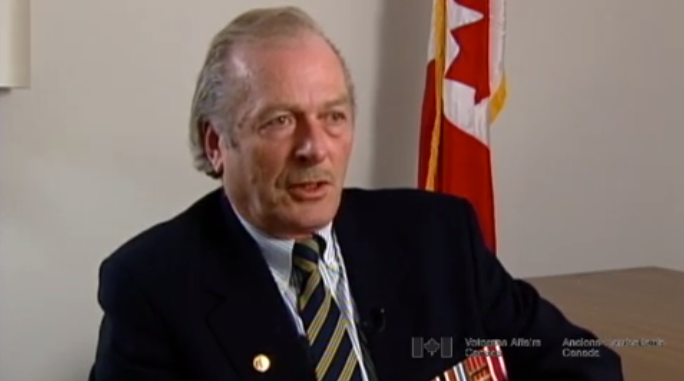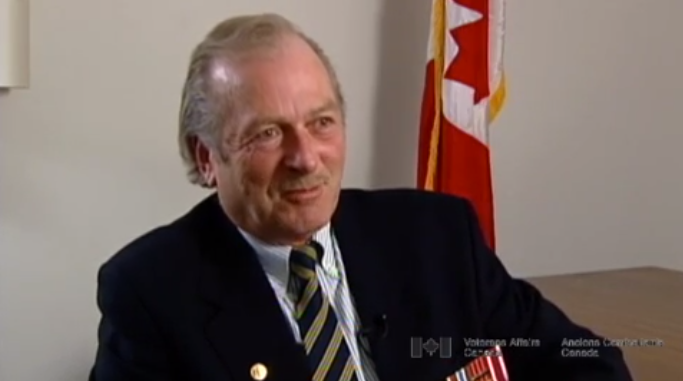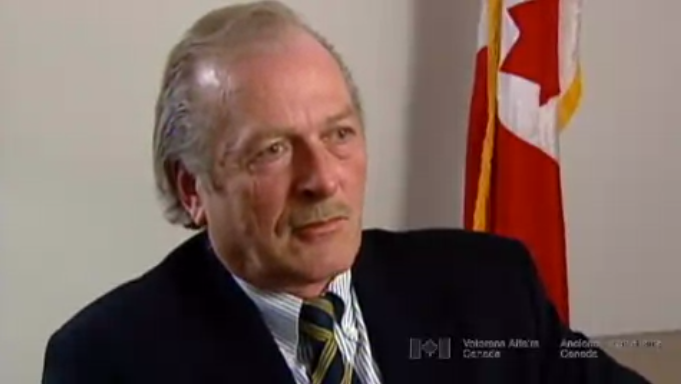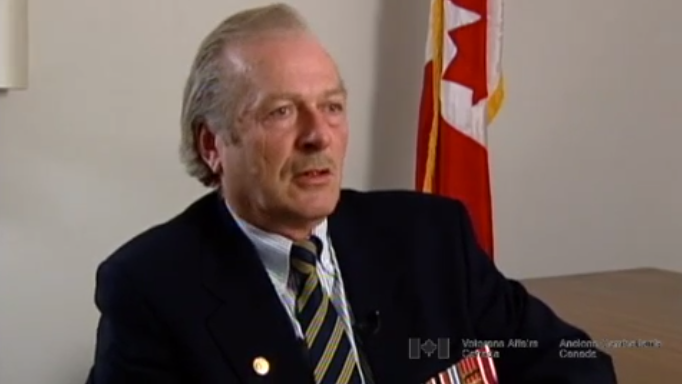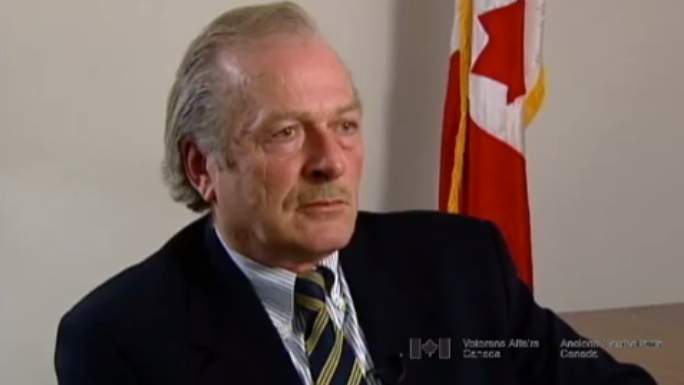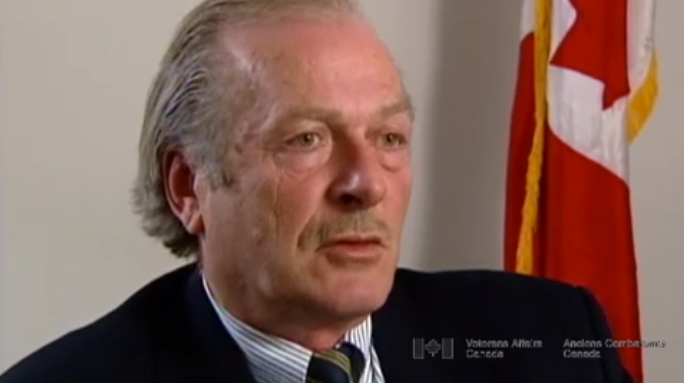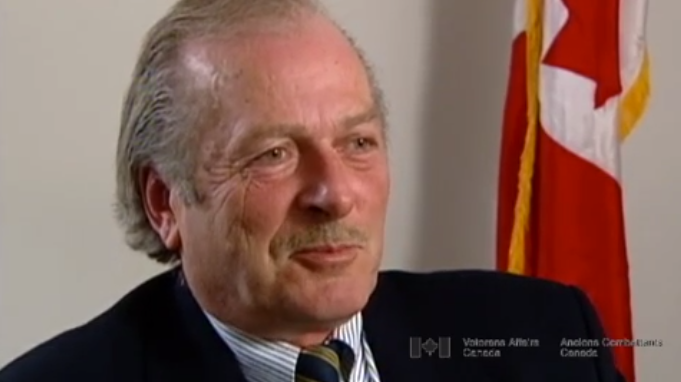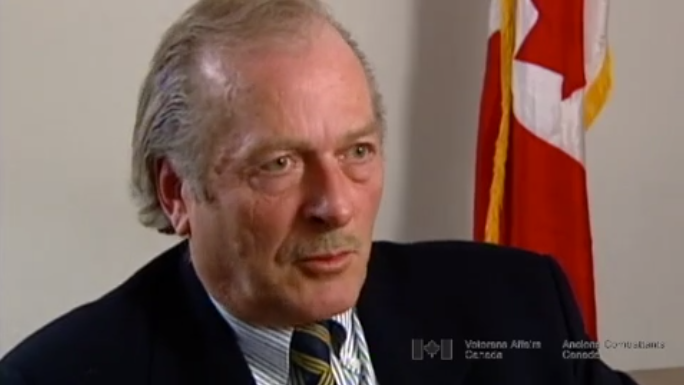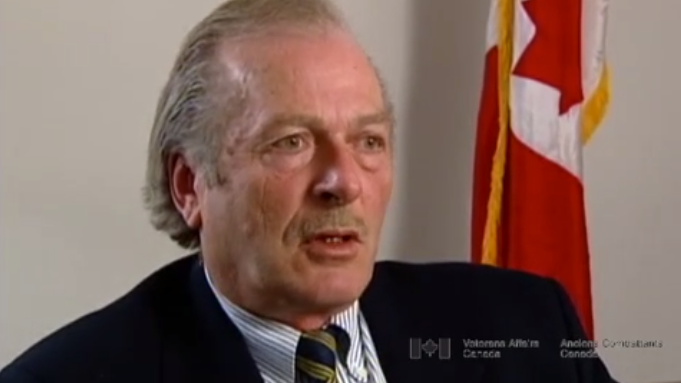Interviewer: What were your duties usually
I was a mission crew commander,
on the AWACS itself, there's two commanders,
there's the aircraft commander.
The aircraft commander is responsible for
the flight safety of the aircraft and flying you
from point A to point B doing aerial refueling
if your doing any refueling etcetera.
And basically outside of that primarily
the flight safety of the aircraft.
The mission crew commander because
it's so big and it's so much equipment on it
and so much that it actually does tactically,
we have a mission crew commander that is
in charge of the back end of the airplane.
All the equipment, all the sensors and
the communications equipment etcetera,
and all the people in the back.
As I said earlier we normally flew with
anywhere's from a 25 to a 40 person crew,
four people in the flight deck and the
rest of the crew, back-enders if you will.
And I was a mission crew commander
in charge of the back. We had, at Tinker,
we normally had six Canadians
that flew in that role. And the other
positions including aircraft commander,
we have Canadians in all the positions
that fly on the American AWACS.
We had enough at one point that we did
fly one mission out of Tinker with an all
Canadian crew which was
rather unique to do it.
So we were, we had people over a period
of time we got access to all the different
positions on the airplane and
we flew in all the different roles.
Interviewer: How often did you fly?
While you're at home in Tinker you were
supposed to fly a minimum of once a
month to stay current. Really preferred that
you fly twice a month to stay current.
During the Gulf War, Desert Shield and
Desert Storm we were usually
flying every third day.
You take one day to mission plan,
plan it to death exactly what time you're
showing up, what time you're getting briefed,
what time you're taking off,
exactly when you're aircraft is showing up,
what every person on the airplane is
doing throughout the entire mission,
whether you're doing aerial refueling and so on.
You plan your mission entirely, very thoroughly
for the entire mission.
That, depending on the complexity of the mission,
takes eight to twelve hours.
Then, the American regulation,
very similar to Canada, is that you must be
in crew rest twelve hours before you fly.
Again you're flying a four hundred
million dollar airplane, you don't want to
be tired when you're flying that airplane,
whether you're at war, or flying in peace time,
still same value. And then we'd come out of
crew rest, get picked up in a Escon Village
about a forty minute drive in,
do our final brief, go to the airplane,
that whole thing would take about two and
a half hours before you'd fly.
And you'd fly anywhere from a twelve
to an eighteen hour mission,
about a two hour debrief at the end of it
another forty, forty-five minutes to get
back to Escon Village, so you're looking
at a about a twenty-four, twenty-five hour day.
Plus your twelve hours, eight to twelve hours
of mission planning you had the day before.
And then you would get a day of rest and
if we were allowed to go downtown,
that's when we'd go downtown for a couple
of hours and do some sightseeing or buy
some jewelry or gold or whatever.
Gold is really good in Saudi Arabia,
very well known for their gold sooks,
gold stores, is what they have there.
And then you'd start the cycle all over again,
and the only variant to that cycle would be
whether you were flying your twelve hours
daytime or twelve hour night time.
It didn't really matter, twelve hours in an
airplane is twelve hours in an airplane
whether it's day or night. The mission was
exactly the same and you were doing
exactly the same job, so it made for an
extremely long day and you get old really
fast doing a twenty-four hour cycle
but that's what you do. Maintain the
integrity of the flight safety of the aircraft
by carrying an augmented crew,
that's how we would go from the
twenty-five to the forty.
We would carry an extra pilot,
an extra flight engineer and so on,
so one of our pilots could be resting,
then they would take turns resting so for
take off, landing and your air refueling we
always had a very alert pilot sitting in the
cockpit for it. We didn't have quite the
same luxury for the back end of the airplane,
just wasn't enough room.
And occasionally we would fly with a
second mission crew commander or a
second senior director, but it's very seldom
that we had an opportunity to do that.
We would, you're there and you're awake
for the twelve to eighteen hours that you're
flying and stay awake and do your job.
Interviewer: When you were flying these,
these were not bombers at all?
No, oh no, no it's a straight surveillance type
of aircraft as a matter of fact we carried no
armament of any kind, not even for self protection.
The radome itself, the unclassified range of the
radar is three hundred miles so you can
sit back quite a ways from the edge of
the battle area if you will.
You can sit quite a ways back and have
fighters between you and the enemy and
you're relatively safe unless you deliberately
take your aircraft into harms way or you have
to get that close to be able to see where
you wanna see. From the southern border,
Baghdad was about 350 miles north
of where we were, 350 to 400 miles,
so if you wanted to see into Baghdad you
were getting pretty close to the Iraqi border.
If you weren't interested for that
particular mission, you could stay a ways back
from the Iraqi border at the time or any other
conflict it's the same principle.
Having that 300 mile radar is your only
protection that you have on AWACS,
we did not carry any weapons of any kind.



